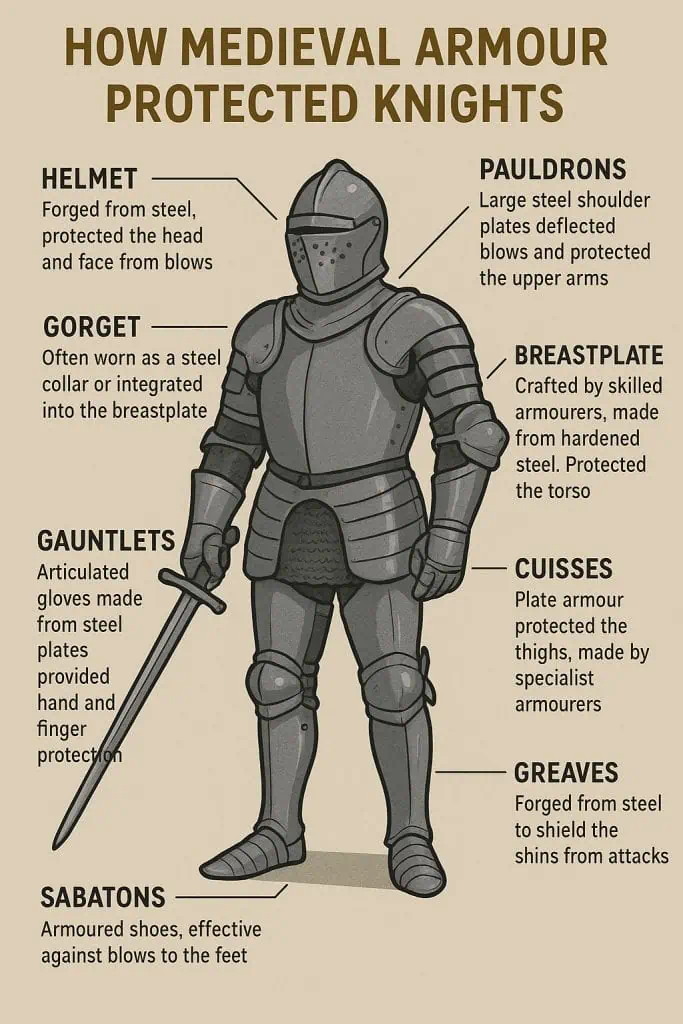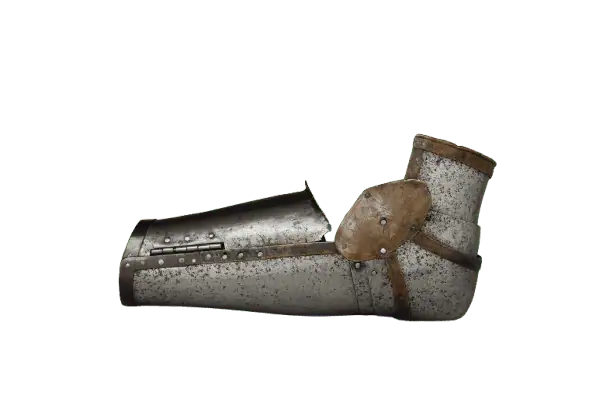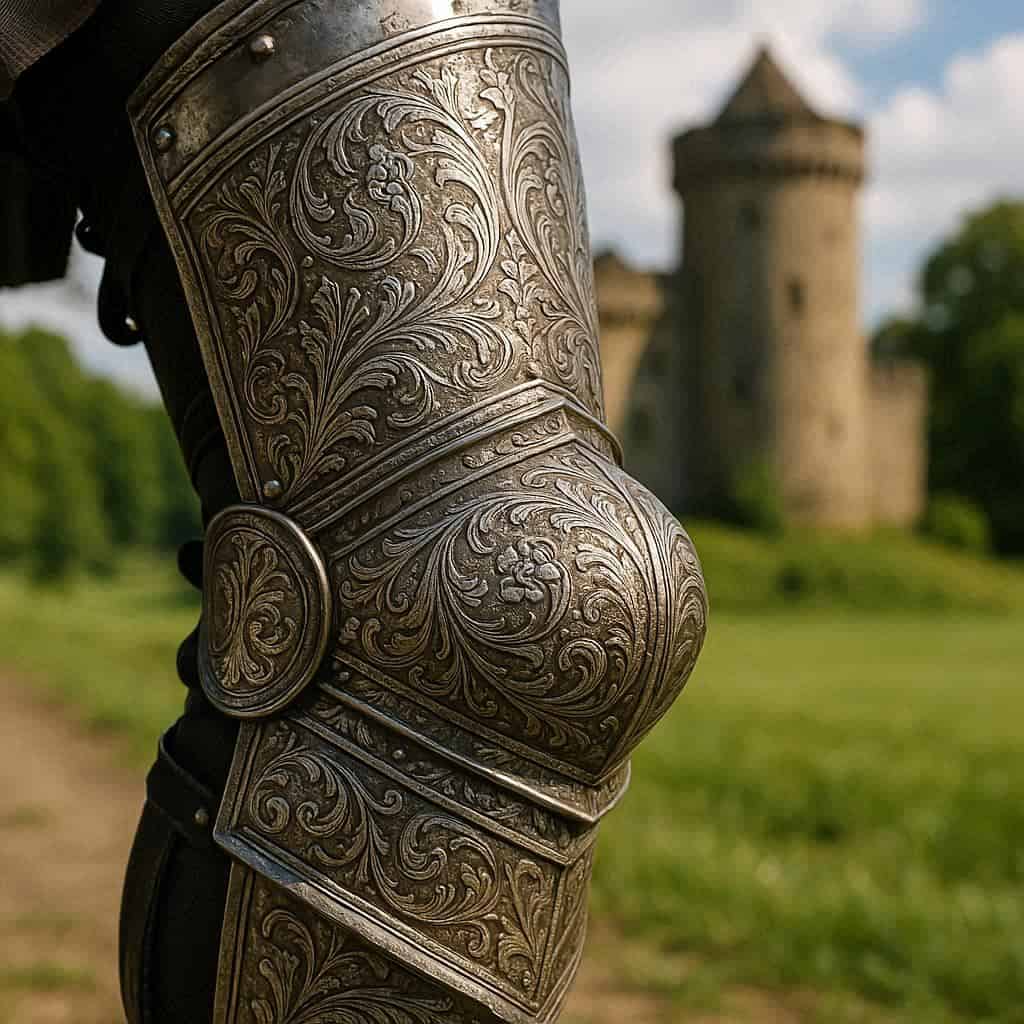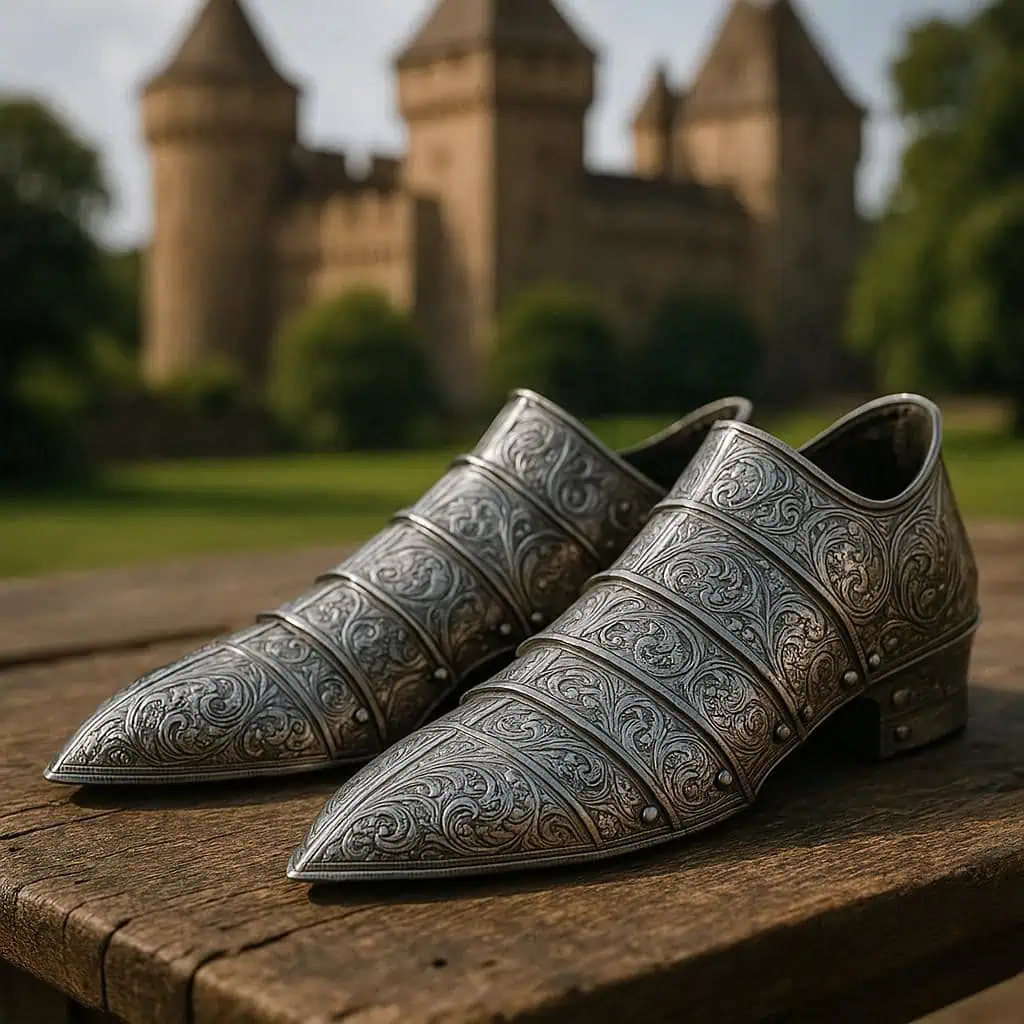Medieval knights were not only symbols of chivalry and power but also highly trained warriors who relied on intricate armour to survive the perils of battle. Armour evolved over centuries to protect against swords, arrows, maces, and lances while still allowing mobility. Crafted by specialized armourers, often using steel and leather, the designs varied between regions, with English, Italian, and French knights favoring different styles. In this article, we break down the key components of medieval armour and explain how each protected its wearer.

1. Helmets (Helms and Great Helms)
- Purpose: Protect the head from sword strikes, arrows, and blunt force.
- Materials & Makers: Forged from steel by skilled armourers; some helmets included leather linings for comfort.
- Regional Variations: English knights favored the rounded Great Helm, while Italian knights developed more streamlined sallet helmets.
- Examples: Fully enclosing steel helms with visors; often padded inside to absorb impact.

2. Gorget
- Purpose: Defended the throat and neck.
- Materials & Makers: Steel plates crafted by armourers; sometimes made from layered iron for added flexibility.
- Regional Variations: Popular in English and French knightly armour, sometimes integrated into Italian breastplates.
- Examples: Steel collar worn over padded garments or attached directly to the breastplate.

3. Pauldrons
- Purpose: Guarded the shoulders.
- Materials & Makers: Forged from steel, often articulated for arm movement; decorated by armour specialists.
- Regional Variations: Italian pauldrons were larger and more curved, while English ones emphasized mobility.
- Examples: Rounded plates overlapping upper arms, sometimes adorned with heraldic symbols.

4. Cuirass (Breastplate and Backplate)
- Purpose: Shielded the torso.
- Materials & Makers: Steel plates crafted by armourers; sometimes reinforced with leather straps and internal padding.
- Regional Variations: Full plate cuirasses common in Italian knights; English knights often combined chainmail with plate.
- Examples: Solid front and back plates designed to deflect sword strikes and absorb impact.

5. Vambraces
- Purpose: Protected the forearms.
- Materials & Makers: Steel or iron, occasionally lined with leather; crafted by armour specialists.
- Regional Variations: Widely used across European knights; Italian designs often more contoured.
- Examples: Plates or chainmail sleeves covering the lower arm, critical for parrying attacks.

6. Gauntlets
- Purpose: Defended the hands and wrists.
- Materials & Makers: Articulated steel fingers and leather linings, crafted by highly skilled armourers.
- Regional Variations: Italian gauntlets favored flexible articulation; English ones emphasized thicker plate.
- Examples: Gloves that allowed grip of weapons while preventing cuts or crushing injuries.

7. Faulds and Tassets
- Purpose: Guarded the hips and upper thighs.
- Materials & Makers: Steel plates, sometimes layered; armourers often worked with blacksmiths to shape them.
- Regional Variations: Common in Italian and French armour; English designs simpler but functional.
- Examples: Overlapping plates hanging from the waist to absorb strikes aimed at the hips.

8. Cuisses
- Purpose: Protected the thighs.
- Materials & Makers: Steel plates or chainmail, crafted by armour specialists.
- Regional Variations: Italian cuisses often more sculpted; English ones prioritized mobility.
- Examples: Plates covering the upper legs, shielding against slashes and spear thrusts.

9. Greaves
- Purpose: Defended the shins and calves.
- Materials & Makers: Forged steel or iron, sometimes lined with leather.
- Regional Variations: Worn by knights across Europe; Italian designs emphasized sleekness for mounted combat.
- Examples: Strapped to lower legs to prevent disabling injuries.

10. Sabatons
- Purpose: Protected the feet.
- Materials & Makers: Articulated steel or iron with leather interior; made by armour specialists.
- Regional Variations: Similar across England, Italy, and France, often matching the rest of the armour style.
- Examples: Metal boots guarding against downward strikes while allowing mobility.

Medieval armour was a sophisticated system of layered protection that balanced defense with mobility. Each component, crafted by skilled armourers, was tailored to defend vulnerable parts of the body. Regional differences reflect the evolution of battlefield tactics, with English, Italian, and French knights adopting designs suited to their combat styles. Understanding the materials, makers, and variations gives a deeper appreciation for these iconic warriors and their enduring legacy.
Useful Resources:
- European Armour, circa 1066 to circa 1700 — Claude Blair — AbeBooks listing
- Arms & Armour of the Medieval Knight — David Edge & John Paddock — Amazon listing
- Medieval Knight 900–1300 — Christopher Gravett — Osprey page
- Medieval Swordsmanship: Illustrated Methods and Techniques — John Clements — Amazon listing
- Metropolitan Museum of Art Collection — MetMuseum Collection
📜 Frequently Asked Questions
What materials were medieval armors made from?
Medieval armor was primarily crafted from **iron and steel**, though earlier versions also included **leather and chainmail** for flexibility and protection.
How effective was armor against weapons?
Armor was highly effective at **deflecting blows from swords, lances, and arrows**, though heavy weapons like maces and war hammers could still cause serious damage.
Did knights wear armor all the time?
No, armor was worn mainly during **battles, tournaments, and ceremonies**. It was too heavy and impractical for daily use.
How much did a full suit of armor weigh?
A full suit of plate armor typically weighed between **45 to 60 pounds (20–27 kg)**, but its weight was well-distributed to allow movement.
Were all knights able to afford armor?
No, full plate armor was very **expensive** and usually only accessible to wealthier knights or nobles. Poorer soldiers relied on **chainmail or partial protection**.






